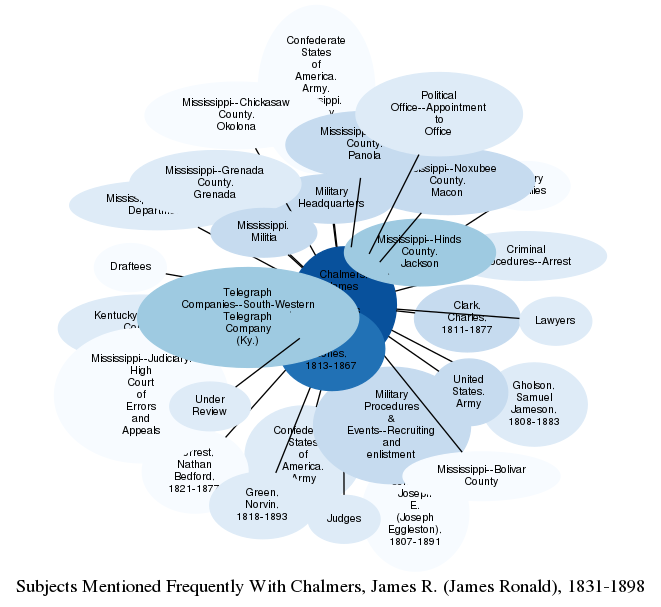Description
Related Subjects

The graph displays the other subjects mentioned on the same pages as the subject "Chalmers, James R. (James Ronald), 1831-1898". If the same subject occurs on a page with "Chalmers, James R. (James Ronald), 1831-1898" more than once, it appears closer to "Chalmers, James R. (James Ronald), 1831-1898" on the graph, and is colored in a darker shade. The closer a subject is to the center, the more "related" the subjects are.